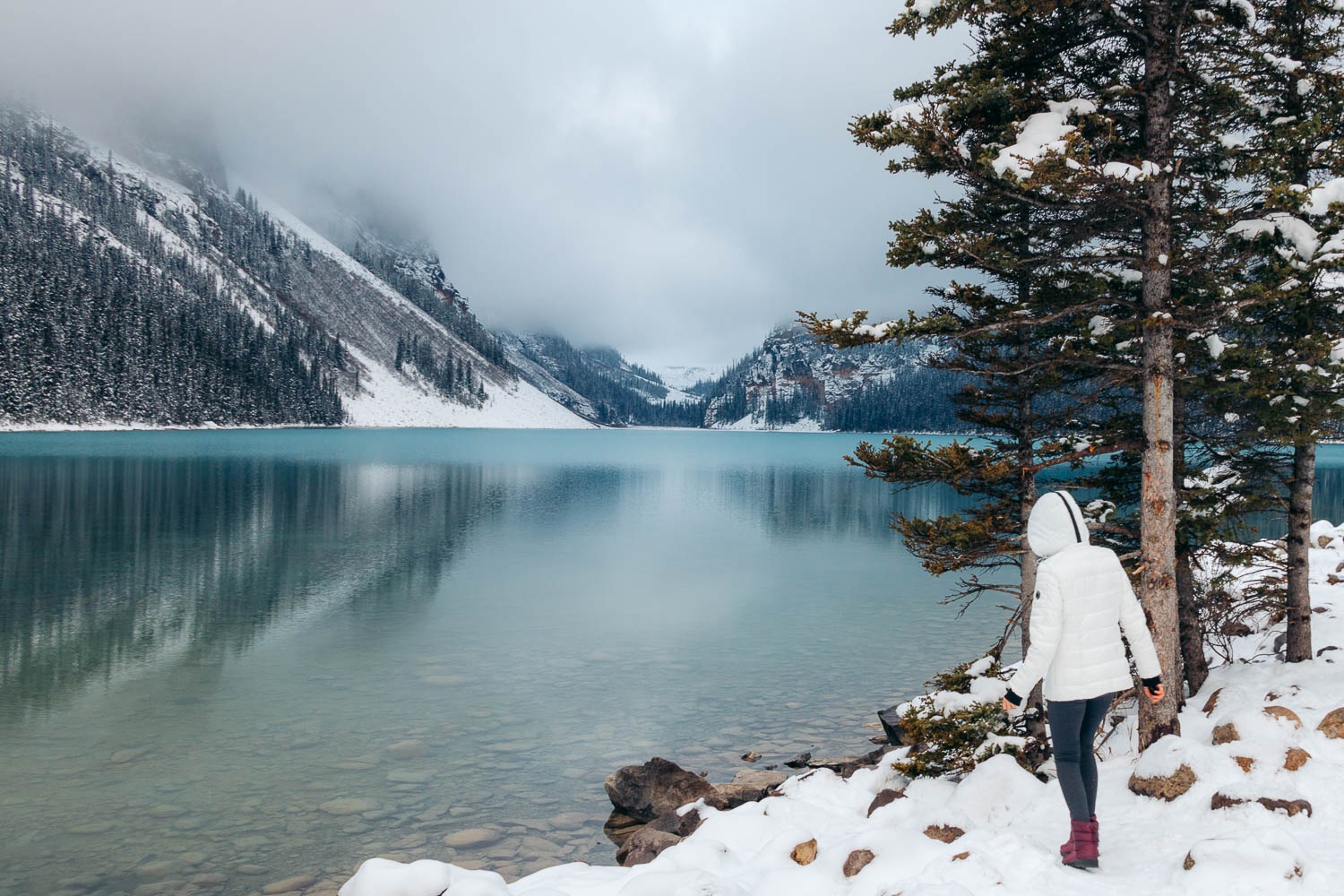Famous for its turquoise color, Lake Louise is one of the best places to visit in Banff National Park, Alberta.
Last updated: March 21, 2025
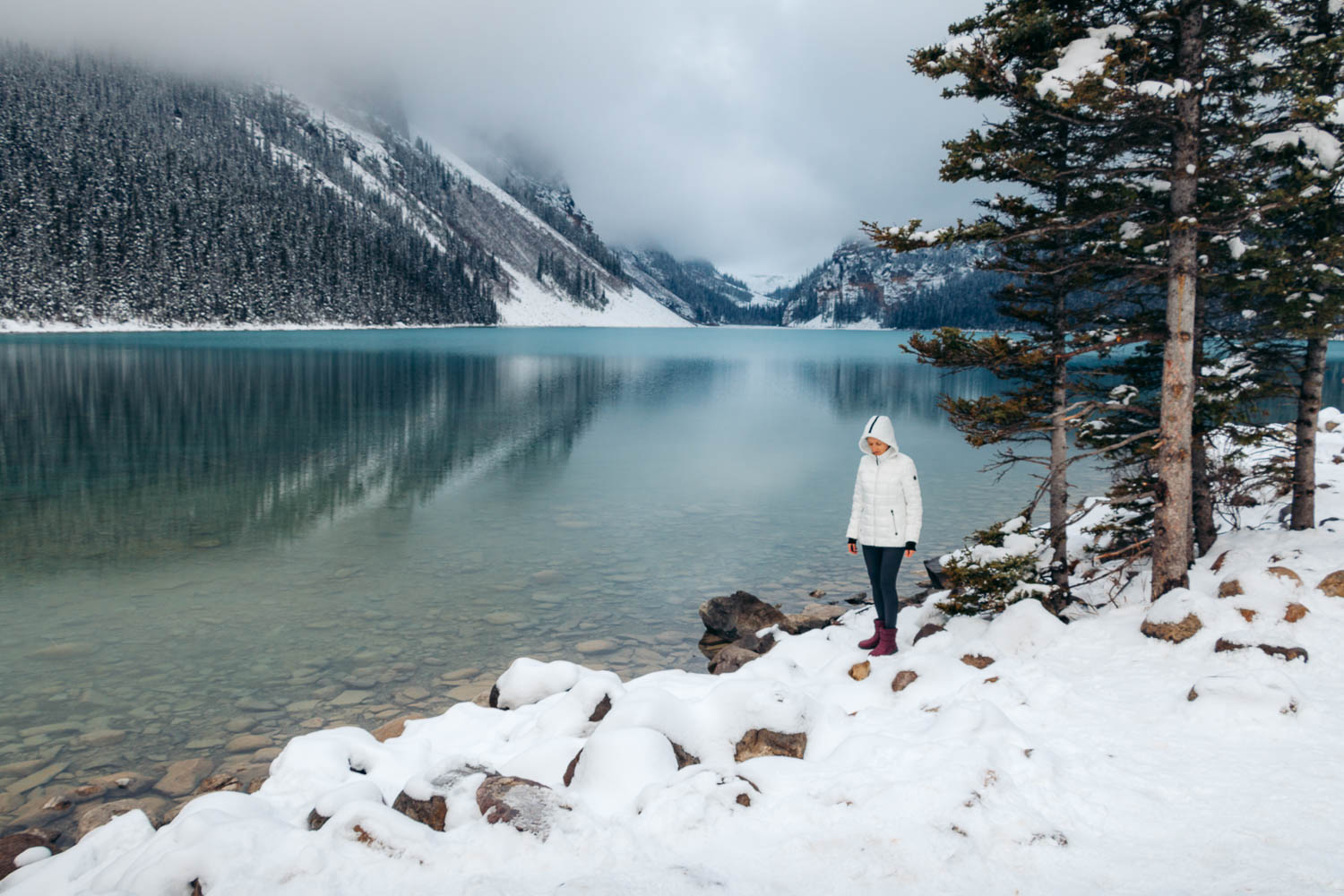
Lake Louise We Didn’t Expect
Busier than most of the places in Banff National Park, Lake Louise looked half if not three or four times less crowded when we arrived in early November. A deep, fluffy blanket made of fresh snow hugged the shores. A dense hazy layer of clouds played hide-and-seek with the majestic mountains surrounding the lake.
Touched with this grey-and-white palette, the area could hardly remind of the vibrant turquoise lake, nestled at the foot of the Canadian Rocky Mountains.
And yet, there was some peculiar beauty and a strange sense of calmness. Lake Louise, void of its iconic vibrancy, was slowly getting ready for a long hibernation. In a few weeks, ice would chain its calm waters, and more visitors would flock to its shores to gash the flat surface with the sharp blades of their ice-skates.
Visiting Lake Louise during Winter Season
We had our worries before visiting Lake Louise in late fall. The winter season in Banff National Park had just started. The snow had inaugurated the beginning of the coldest time. The icy cover… Well, we still hoped to see the stately Canadian Rocky Mountains reflecting off the lake.
As if responding to our longing, Lake Louise wasn’t in a hurry to clothe itself in a glassy armor. The mountains still looked into the still water like in a mirror. Heavy snowflakes created a hazy veil around the winter-festive lake.
Maybe visiting Lake Louise during the off-season wasn’t such a bad idea, after all. It certainly felt like a right decision when it came to parking and sharing the area with far fewer winter visitors.
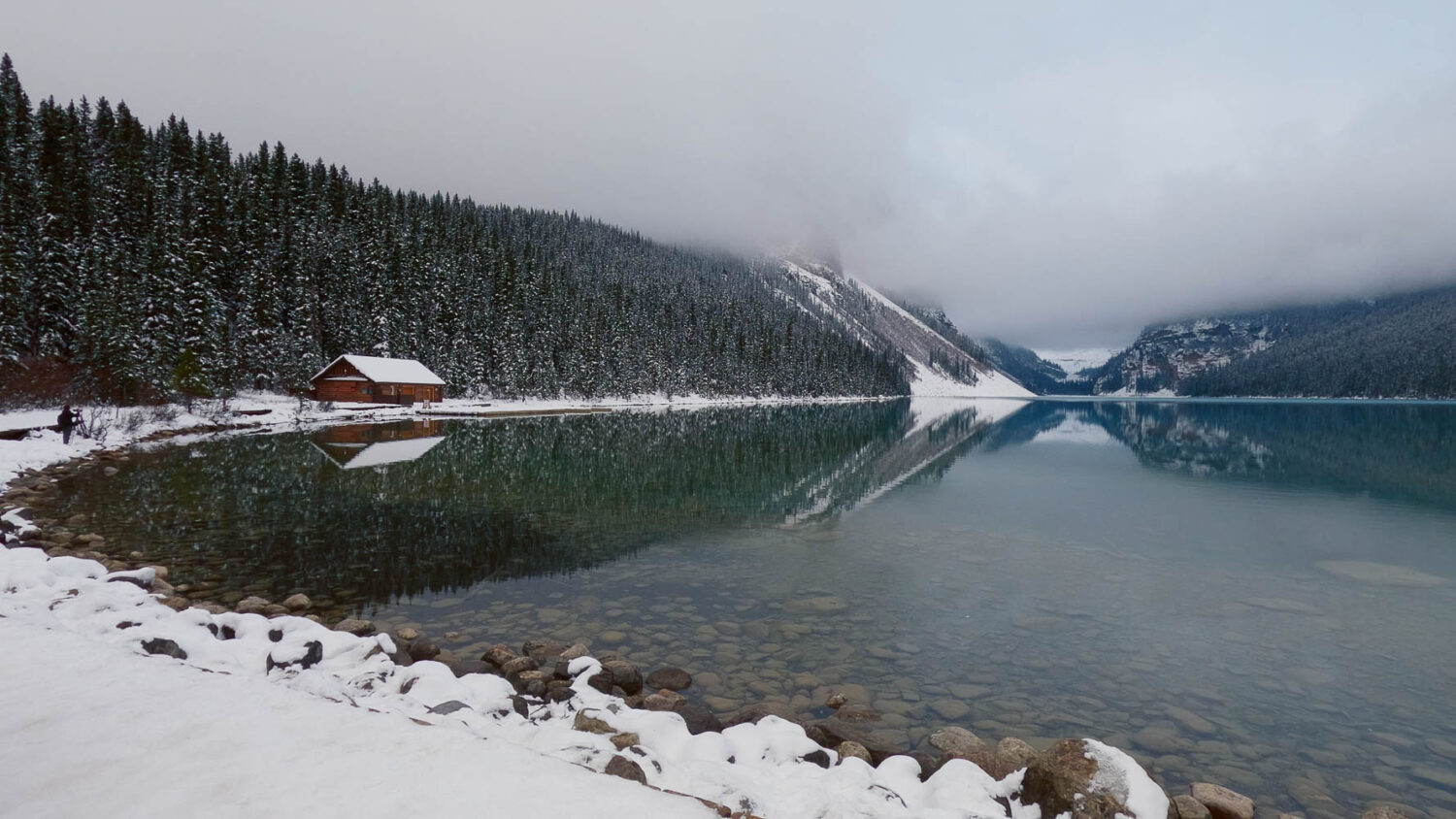
THINGS TO KNOW BEFORE VISITING LAKE LOUISE IN BANFF NATIONAL PARK
1. Where Is Lake Louise?
Lake Louise is a picturesque alpine lake in Alberta. One of the most beautiful places in Canada, it sits within Banff National Park, 57 kilometers northwest of the town of Banff. Take the same road, the Trans-Canada Highway, and head west for approximately 10 kilometers to enjoy even more secluded natural wonders of Yoho National Park, located in British Columbia.
2. History in a Nutshell
Years before Lake Louise was first mentioned in any Canadian records, the area was known by the Stoney-Nakoda people as Horâ Juthin Îmne or “the Lake of Little Fishes”. The name described the underwater realm of the lake precisely.
The freezing cold water wasn’t a good environment for many aquatic animals. Small fish such as Cutthroat Trout, Bull Trout, and Mountain Whitefish, however, found it suitable for living and spawning.
In 1882, one of the natives led Tom Wilson, a Canadian railway worker, to the area. Impressed by the intensity of the lake water, Wilson called it Emerald Lake. The name was soon dropped. The place was renamed after Princess Louise Caroline Alberta, the fourth daughter of Queen Victoria of the United Kingdom and the wife of the Governor-General of Canada.
In 1884, the Canadian Pacific Railway Company built a first settlement near the lake. The city was known as Holt. A year later, after the creation of Banff National Park, a new type of visitors flocked to the area.
Ceasing the opportunity, in 1890, Canadian Pacific Railway general manager Cornelius Van Horne built a small cabin on the shore of the lake. Only 50 guests could stay at the log structure at that time. By 1912, significantly expanded, the lodge accommodated 50,000 tourists.
More than 100 years and two fires later, the tiny cabin, now supersized, still bedecks the shore of the lake. It’s known as Fairmont Chateau Lake Louise, a luxurious alpine resort that welcomes nature lovers all year round.
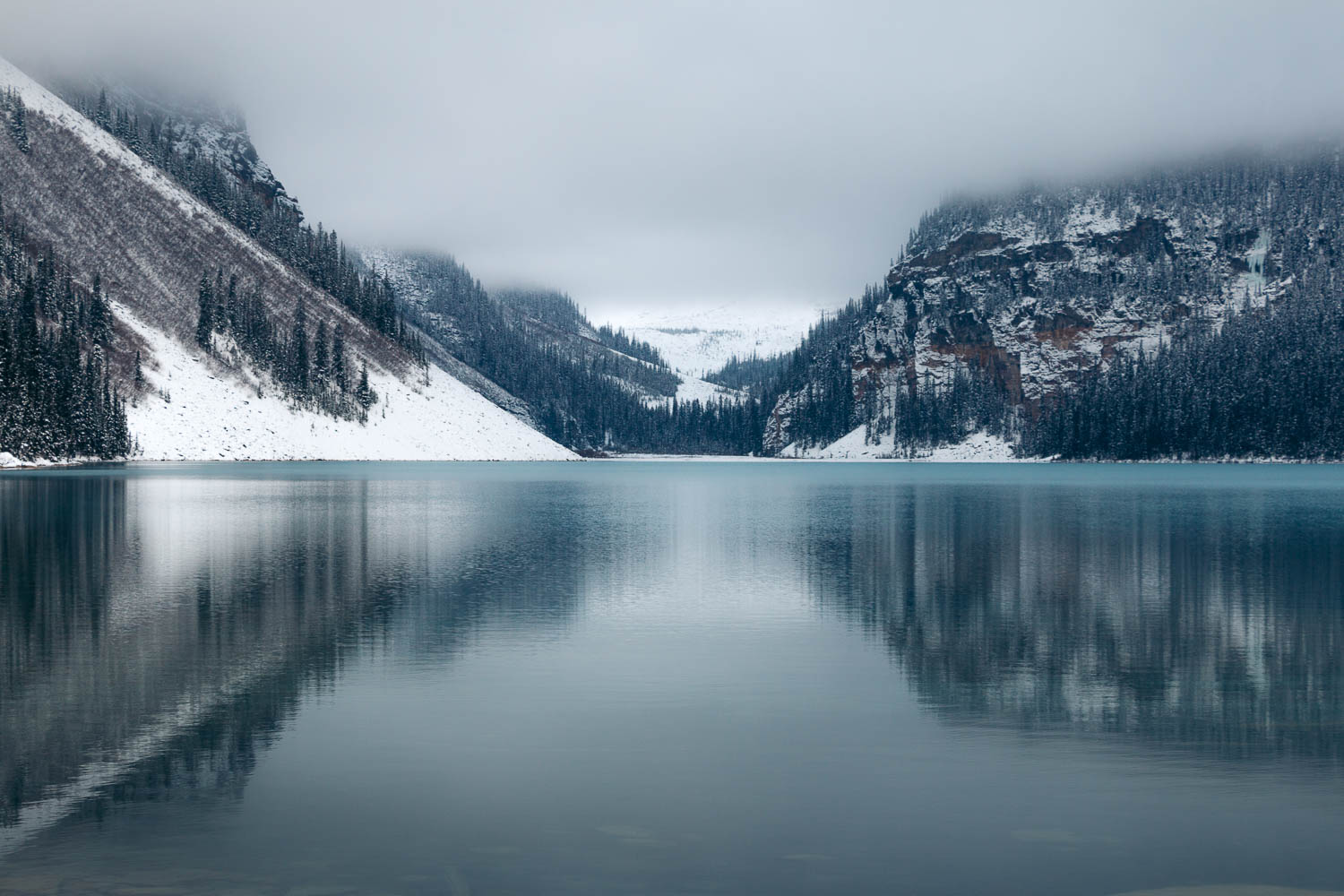
3. How Big is Lake Louise?
One of the most resplendent lakes in Banff National Park, Lake Louise snuggles amid the majestic Canadian Mountains at an elevation of 1,731 meters (5,680 feet). Surrounded by Mount Victoria, Mount Temple, Mount Whyte, and Mount Niblock, the lake originates from Victoria Glacier (on Mount Victoria) that stands guard over its western shore.
The turquoise waterbody extends for roughly 2.4 kilometers (1.5 miles) in length. It’s nearly 1.2 kilometers (0.75 mile) wide at its broadest point (according to Britannica website). The deepest section of the lake lies more than 70 meters (220 feet) above the surface.
4. What is Lake Louise Famous for?
Lake Louise is famous for its mesmerizing turquoise color that stands out amid the snow-capped mountains and green forest neighboring the shore. The distinctive color comes from the glacier meltwater that spills into the lake every spring.
Along with the reliable water supply, the meltwater carries rocks, broken off from the mountains. En route to the lake, the rocks get eroded and crushed into glacier salt or rock flour, the key ingredient to the vibrant hues. Once inside the waterbody, the “salt” dissipates sunlight in a way that enhances the blue and green wavelengths, bestowing on the lake its signature color.
The turquoise shade of the water is most vivid in spring and summer. At the beginning of the winter season, enveloped by thick fog, the colors fade.
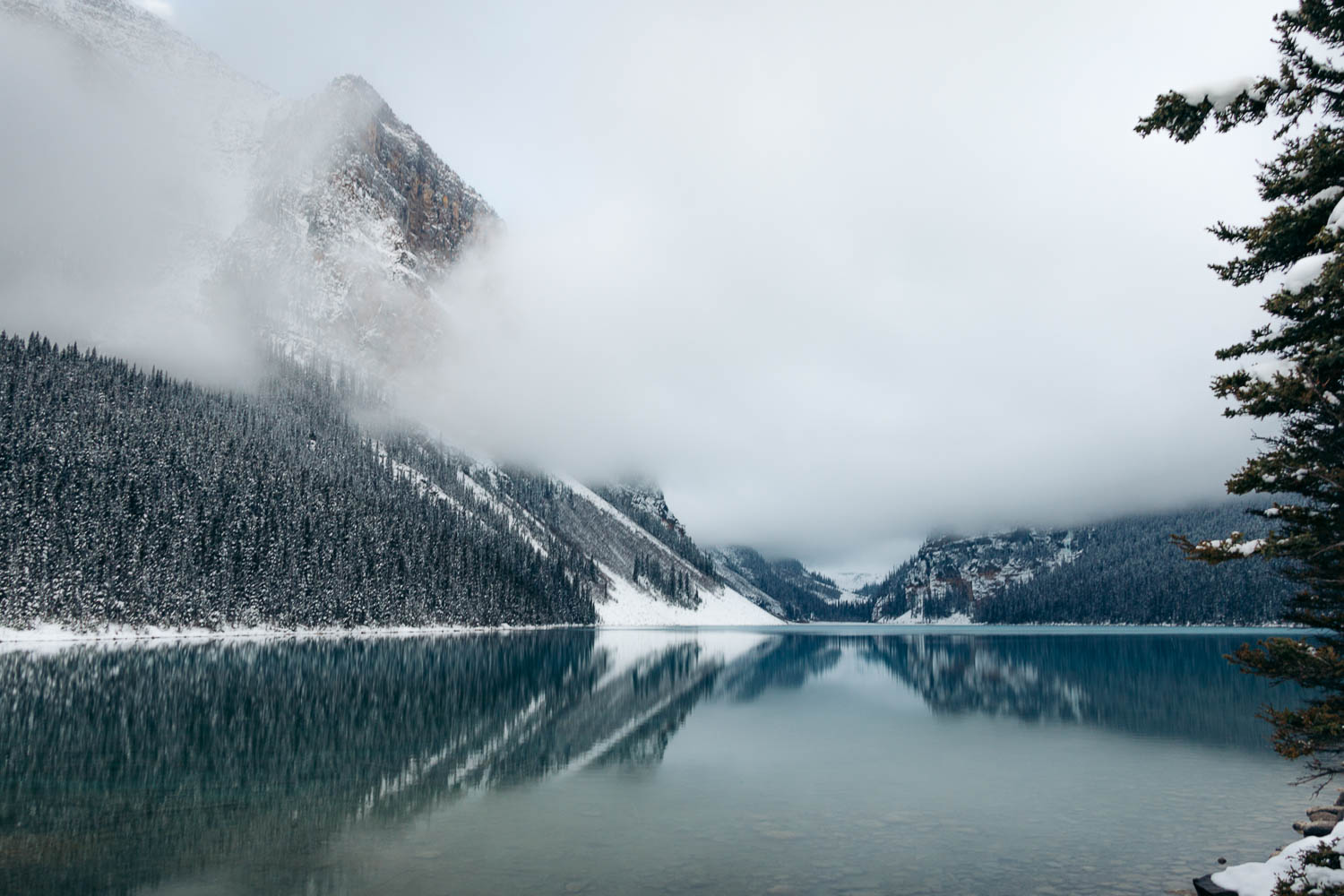
5. When is the Best Time to Visit Lake Louise?
The summer months are the busiest. Millions of visitors stop at the glacial lake to take in the remarkable scenery, hike in the pristine surroundings, and take scenic boat tours.
With the weather dramatically improved, July and August are considered the best time to visit Lake Louise if hiking, fishing, and biking are on your radar. You can have similar experiences in June. Be sure to pack a raincoat and umbrella, as it’s the wettest month in Banff National Park.
Visit the area in September to enjoy fall colors popping up in the surrounding forests. The autumnal festiveness in the mountains is short-lived, though.
By November, all fall foliage is gone and a fresh blanket of snow covers the ground. It’s time to get on skis or snowshoe across the area in anticipation of the colder weather when Lake Louise freezes over and the ice skating season starts, which is normally January and February.
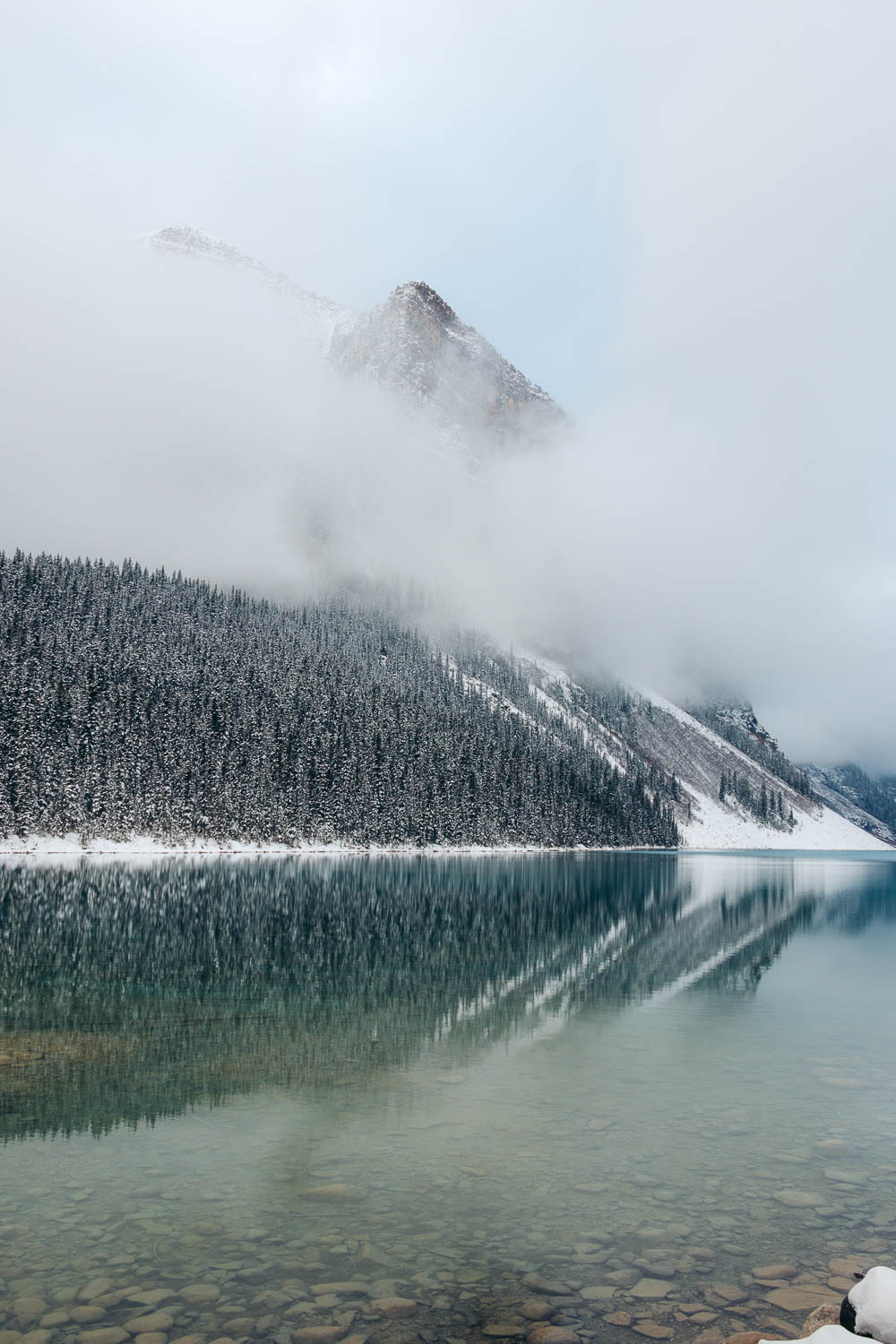
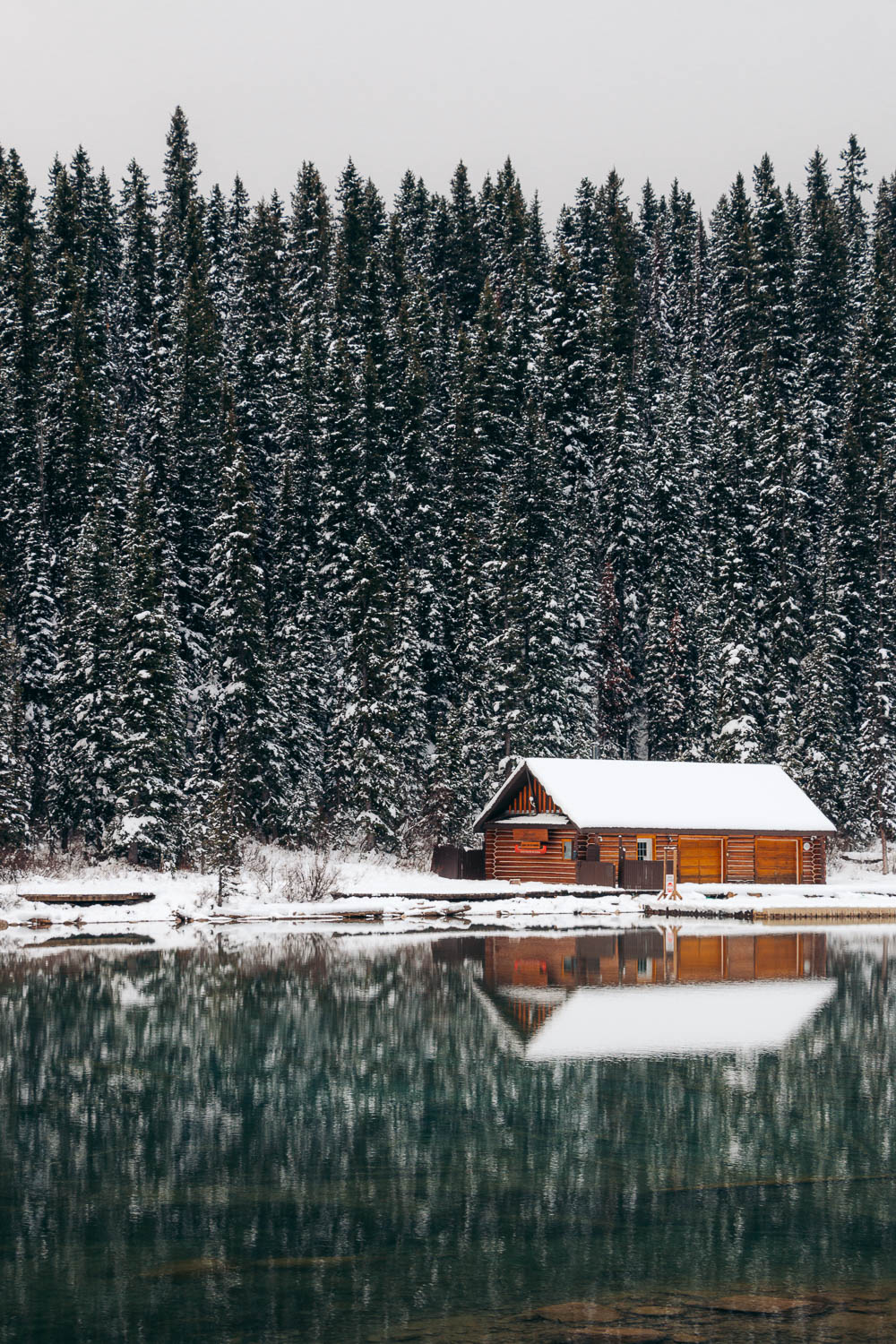
6. The Best Time of the Day to Visit Lake Louise?
During the summer season, when Lake Louise is the busiest, the best time of the day to explore its shores and surroundings is either early in the morning or later in the evening. As more visitors drive to the area, the parking situation worsens. When the parking lot gets full, all other cars are turned away.
Coach tours also normally arrive during the day, bringing with them dozens of tourists. So finding a secluded spot to enjoy the brilliance of the area gets harder.
The time of the day becomes more irrelevant when you visit Lake Louise during the off- or shoulder season (May and October). Significantly fewer people are inclined to enjoy a winter wonderland and the periods before and after it in the Canadian Rocky Mountains.
7. Is Lake Louise Open All Year Round?
Lake Louise is open year round. The peak season falls on the summer months, July and August. The winter season starts as early as mid-October and may last until the end of April. The shoulder months when the weather is neither warm nor bitterly cold are May and October.
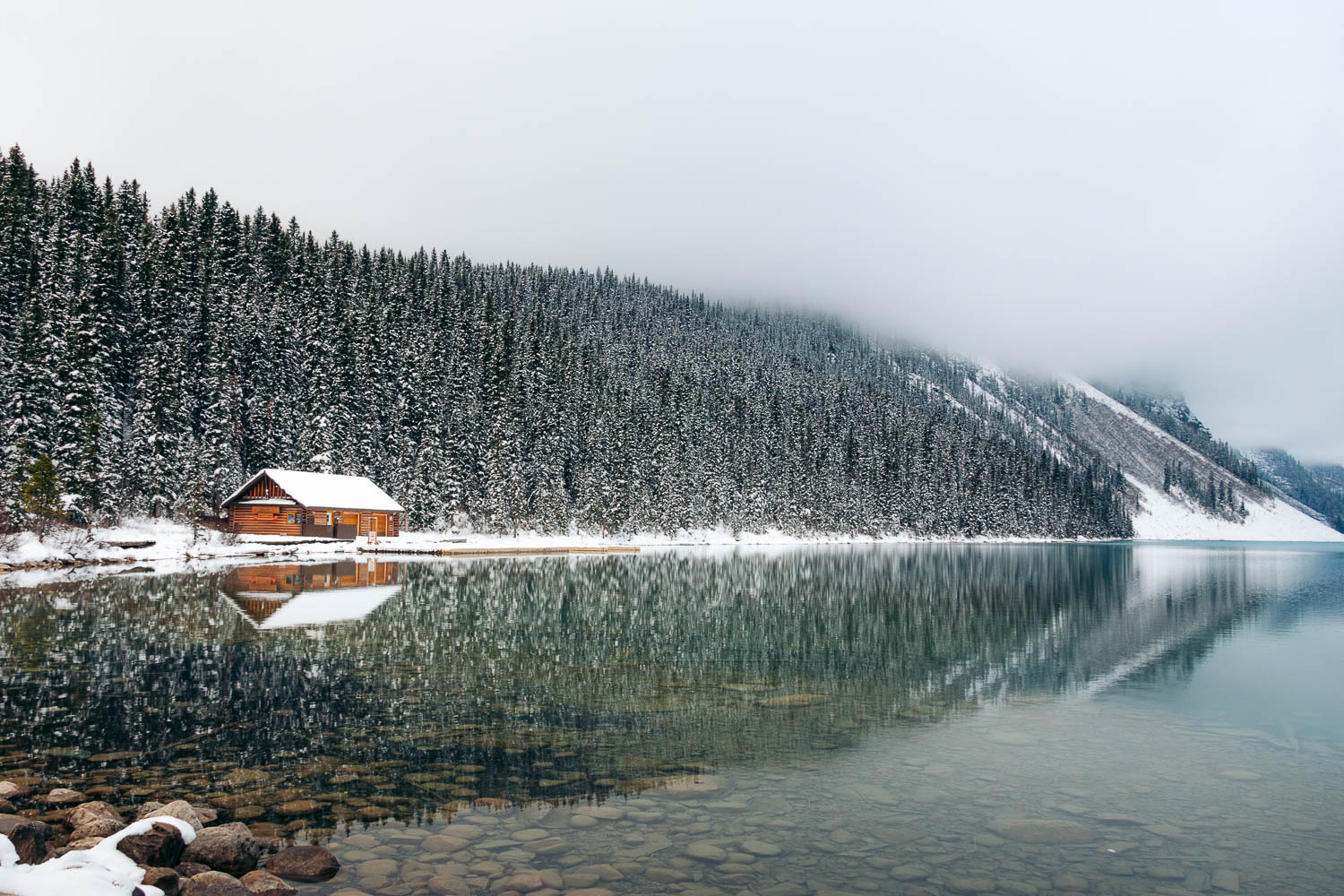
8. When does Lake Luise Freeze Over?
By the end of November, the entire lake rests under a thick layer of ice. The skating season on Lake Louise starts sometime in the middle of December, depending on the weather conditions. Any fresh snow on the lake is cleared daily.
You can bring your own skates or rent them at Chateau Ski and Snow Rentals, located in the lower lobby at Fairmont Chateau Lake Louise.
Interesting to Know: Not only Lake Luise transforms with the arrival of the winter season. Favorite waterfalls in Johnston Canyon also change their state from liquid and gurgling to crystal and static. If you haven’t seen a frozen waterfall before, it’s a great place to do it.
9. When does Lake Melt?
The icy lid on the lake starts melting in late April – early June. The skating season usually ends in mid-April. By July, the area is free from any ice and boasts its iconic colors once again.
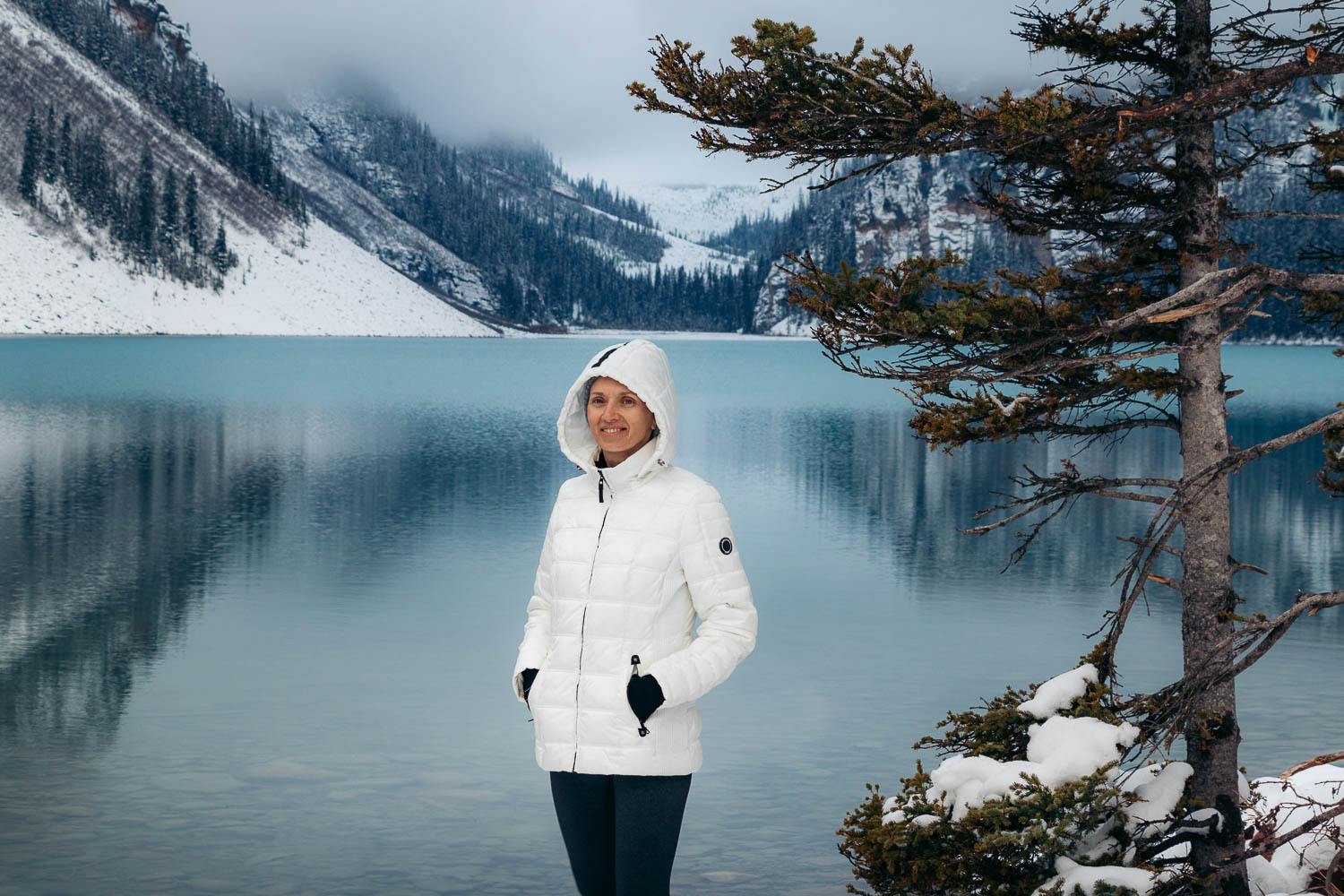
10. Is Lake Louise Busy?
Lake Louise is one of the most popular destinations in Banff National Park. Pictures of the area adorn covers of magazines. Millions of photos depicting this turquoise mountain lake appear on the Internet. So it leaves little room for any surprises to discover how whirling busy the area can be.
People from all over the world stop at Lake Louise to feast their eyes of its natural opulence while visiting Banff National Park. It’s estimated that during the summer season, up to 15,000 people visit the area every day.
The place was also the busiest in early November when we spent a weekend in Banff and Yoho National Parks. Yet unlike in the summer months, parking spots were still plentiful and the lake didn’t feel like a beehive.
TIP: If you look for equally impressive views with far fewer people to share them with, head over to Peyto Lake located near the Icefields Parkway.
11. Is the Area Accessible by Car?
Unlike Moraine Lake, one of the closest neighbors of Lake Louise, the area is open for private vehicles.
12. Parking at Lake Louise
A spacious parking lot at Lake Louise Lakeshore is open year round. Parking at Lake Louise, however, is not free. A day parking permit ($21) is required from 7 a.m. until 7 p.m. between mid-May through early October.
Yet as the area allures millions of visitors between June and October, finding an open parking spot at this time is almost impossible. The Park and Ride shuttle system that operates in Banff National Park during the peak season enables you to enjoy Lake Louise and Moraine Lake stress-free.
The parking situation at Lake Louise is not as acute during the off- and shoulder seasons. You can count on securing a parking spot whether you arrive early in the morning or during the “rush” hours.
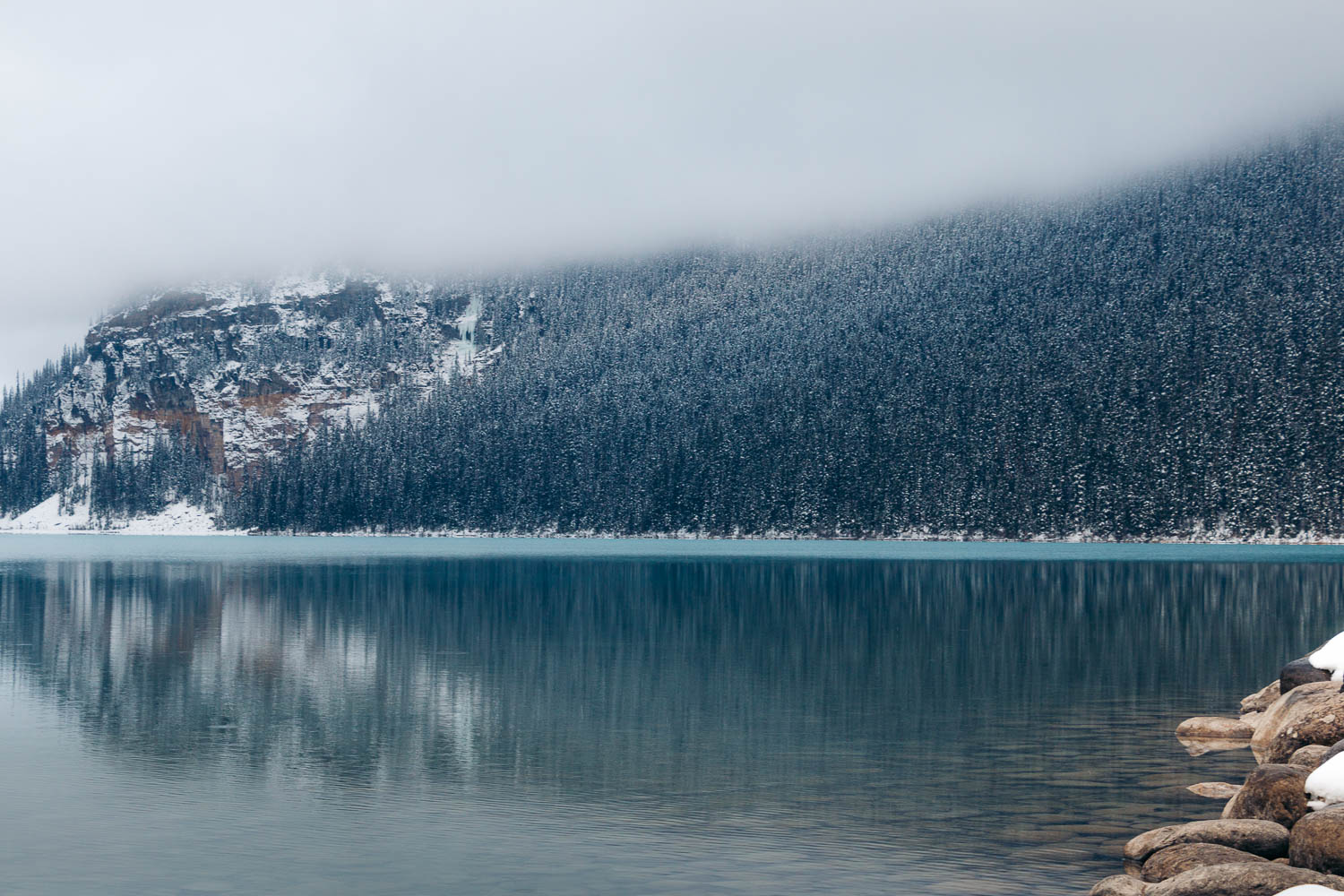
13. How to Get to the Lake by the Park and Ride Shuttle?
During the peak season when the parking lot at Lake Louise Lakeshore fills up quickly, you have two options: to skip the lake or use the Park and Ride shuttle system.
In the latter case, board a shuttle at the Park and Ride stop, located at the Lake Louise Ski Hill. Parking at the Park and Ride lot is free, with plenty of spots to accommodate the ever-growing number of Banff’s visitors.
The seats on the bus, however, are limited and fill up quickly. So while it was highly recommended that you make a shuttle reservation in advance just a short while ago, now reservations are required for all shuttles departing to Lake Louise or Moraine Lake.
The Park and Ride shuttles normally run to and from the lake from mid-May through early October. The first ride is at 6:30 a.m. The last return bus leaves the lake at 7:30 p.m.
TIP: Learn more about the peculiarities of visiting Banff National Park and its famous lakes in our article How to Explore National Parks in the U.S. and Canada.
Park and Ride Shuttle Prices
- Adult (18 – 64 years): $8.00
- Senior (65+ years): $4.00
- Youth (17 and under): free
- Non-refundable reservation fee of $3 is applied to all bookings made online.
14. How Can You Get to Moraine Lake from Lake Louise?
Moraine Lake is closed to public vehicles. The only way to explore this jewel is by riding a shuttle bus or hiking. Once you arrive by the shuttle at Lake Louise, you can enjoy the scenery or catch the Lake Connector shuttle right away. The ride is offered on a first-come-first-served basis to Parks Canada reservation holders only.
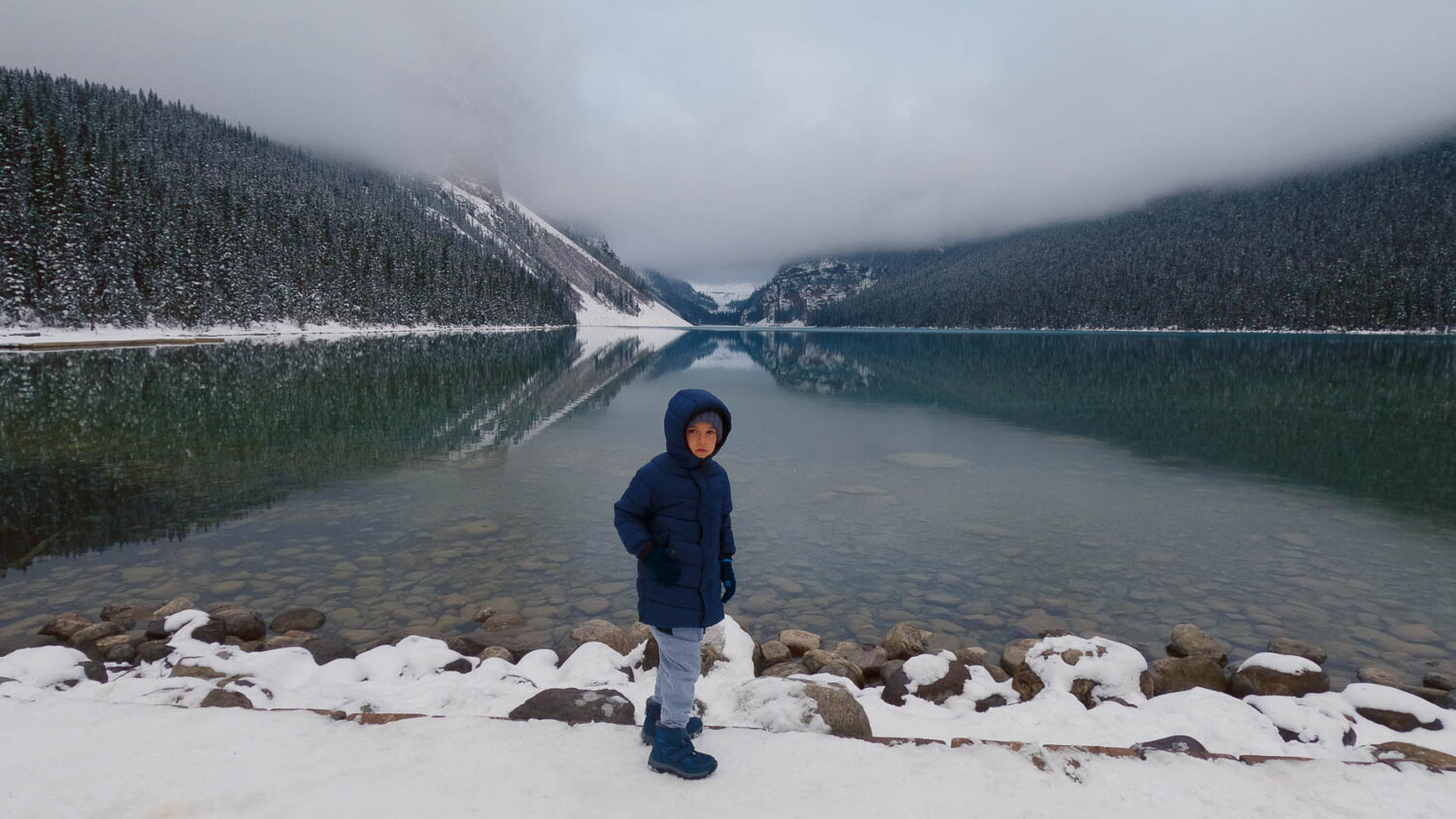
15. Canoeing on Lake Louise
Canoeing is one of the most sought-after experiences at Lake Louise. Soaking up the magnificent views of the towering mountains visually separated from the lake by a dense line of evergreen trees while paddling across the rich turquoise waters amplifies this short trip.
You can rent a canoe from late May or early June (depending on the weather conditions) until the beginning of October at the Fairmont Lake Louise boathouse. Nestled on the western shore of the lake, the boathouse offers single canoes that hold either three adults or two adults and two small kids or voyageur canoe experiences for groups.
The canoes are available on a first-come-first-served basis. During the peak season, the wait time for the canoe is long, often up to 3 hours.
You can also bring your own canoe or kayak and explore the area from the water.
Canoe Rental Prices
- In-house guest: $95+tax one hour
- In-house guest: $85+tax 30 minutes
- Day visitor: $145+tax one hour
- Day visitor: $135+tax 30 minutes
Voyageur Canoe Experience
- In-house guest: $60+tax per adult, $30+tax per child (8-12 years)
- Day visitor: $75+tax pr adult, $40+tax per child (8-12 years)
16. Can You Swim in Lake Louise?
If you are a walrus, go ahead and take a dip in the turquoise and blue waters of the lake. Swimming in Lake Louise is allowed. But whether you want to do it or not is a completely different question.
The former Emerald Lake is a glacial lake. The water temperature rarely gets above 4-5°C (39-41°F) even in the summer when the Lake Louise Polar Bear Dip is held during the Canada Day celebrations (July 1).
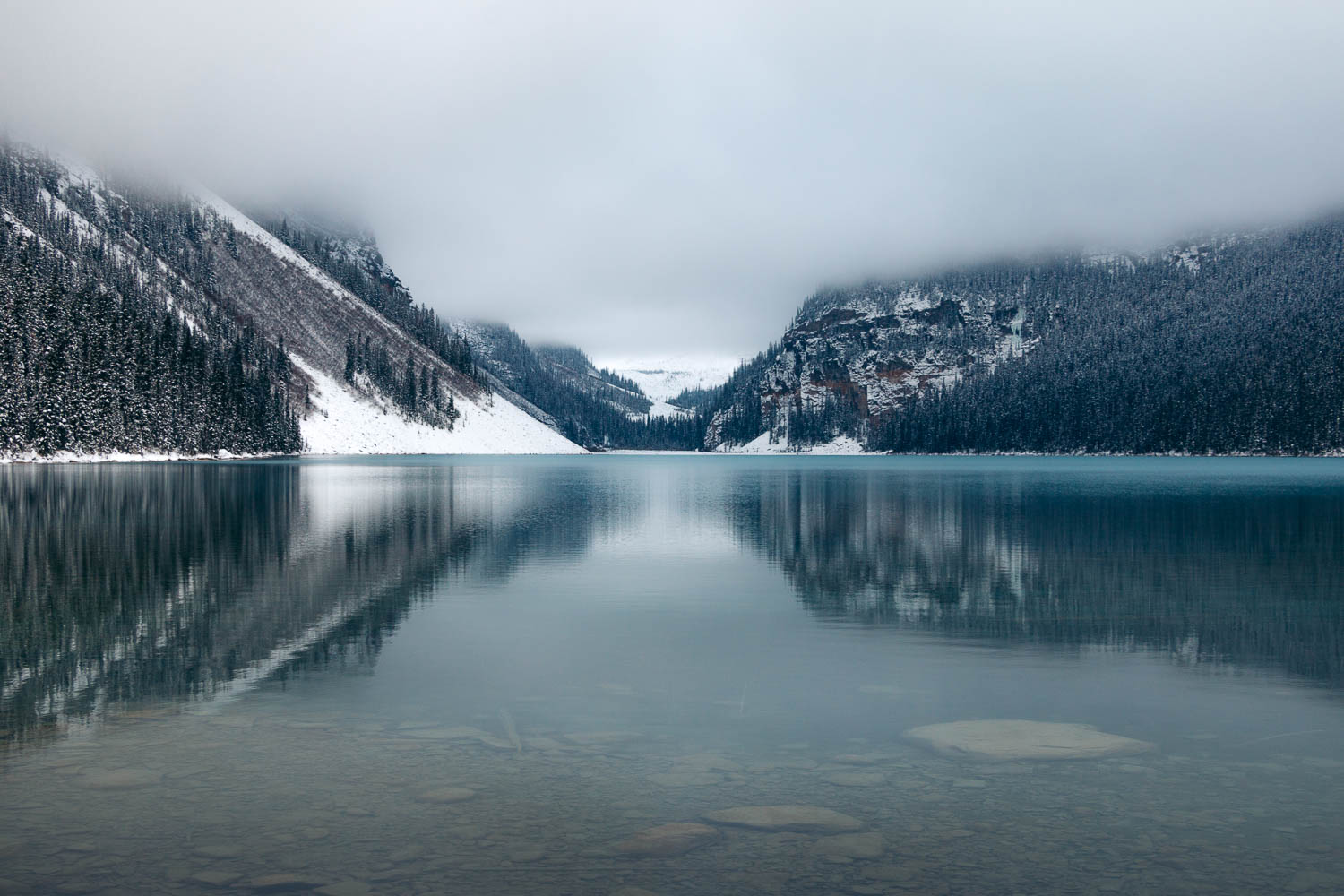
17. What Are the Best Hikes in the Area?
Some of the best hikes in Banff National Park start near the iconic lake. The trails range from a couple of kilometers to more than 10 kilometers and a significant elevation gain. Some of the easiest hikes for day visitors include the Lake Louise Lakeshore, Fairview Lookout, Lake Agnes, Little Beehive, and the Bow Glacier Falls Trails.
18. Can You See Fall Foliage at Lake Louise?
The fall season in Banff National Park may be short-living, but it’s quite bright. Highlighting the tops of the mountains, larch trees put on their golden gowns in mid- through late September. Aspens follow their lead and keep the festive fall mood intact well into October.
Good to Know: The fall season spreads across Canada with a blizzard speed, transmuting mountains, gullies, and cities into colorful living paintings. Even such a bustling city like Vancouver in British Columbia slows its pace to enjoy the seasonal vibrance while it lasts. Fall colors in Vancouver may be as short-lived as at Lake Louise, but not less impressive. So check them out if you get an opportunity.
19. Where to Stay Near Lake Louise?
A few hotels, including Fairmont Chateau, Paradise Bungalow, and Deer Lodge, sit right on the shore or close enough that you can walk or hike to the lake. While ensuring the quickest access to the area, these places are normally on the higher end.
More affordable accommodation and a great variety of dining options are available in Banff and Canmore.
20. Is Lake Louise Worth Visiting?
Known as a crown jewel of Banff National Park, Lake Louise is one of the most gorgeous places in Canada. It’s also one of the most photographed regions in the world. While I try to avoid any crowded places as much as possible, I must admit Lake Louise, with all its natural opulence and busyness, is well worth visiting. It’s a place that aligns with intriguing Canadian culture in the most natural way.
